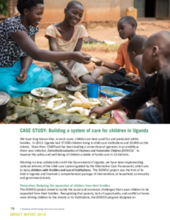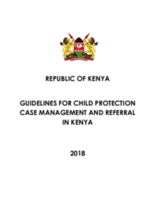Displaying 741 - 750 of 1609
This special report from the Global Press Journal explains Uganda's recent "crackdown" on children's homes, highlighting the transition of one institution in particular, Hope Center Uganda, from a residential care home to a community center.
In this study, the authors examined the process of how relationships are built between Ethiopia adoptees and their adoptive families within the new family setting.
UNICEF is seeking a consultant to conduct a mapping of residential care facilities in Uganda.
"Ethiopia has banned the adoption of children by foreigners amid concerns they face abuse and neglect abroad," says this article from BBC News.
UNICEF is seeking a Chief of Child Protection in Zambia.
This study examined the prevalence of maltreatment and violent discipline from both the adolescents’ and parents’ perspectives.
Samburu County, Kenya will not be renewing the registrations of several children's institutions in the county and the County Children Co-ordinator Jane Kabiro is calling on the Samburu government to develop a child protection unit.
In 2017, the USAID Displaced Children and Orphans Fund (DCOF) of the United States Agency for International Development (USAID) engaged the USAID-funded MEASURE Evaluation to build on and reinforce progress in advancing national efforts on behalf of children who lack adequate family-based care in Uganda.
This case study from ChildFund's 2018 Impact Report describes the Deinstitutionalization of Orphans and Vulnerable Children (DOVCU) initiative in Uganda, which aims to to improve the safety and well-being of children outside of family care.
The guidelines for Case Management and Referral for Child Protection Systems in Kenya is a reference material to guide different actors on how to carry out comprehensive case management and referral and defines the role of the government, civil society organizations, the communities, the family and the child to complement each other.


